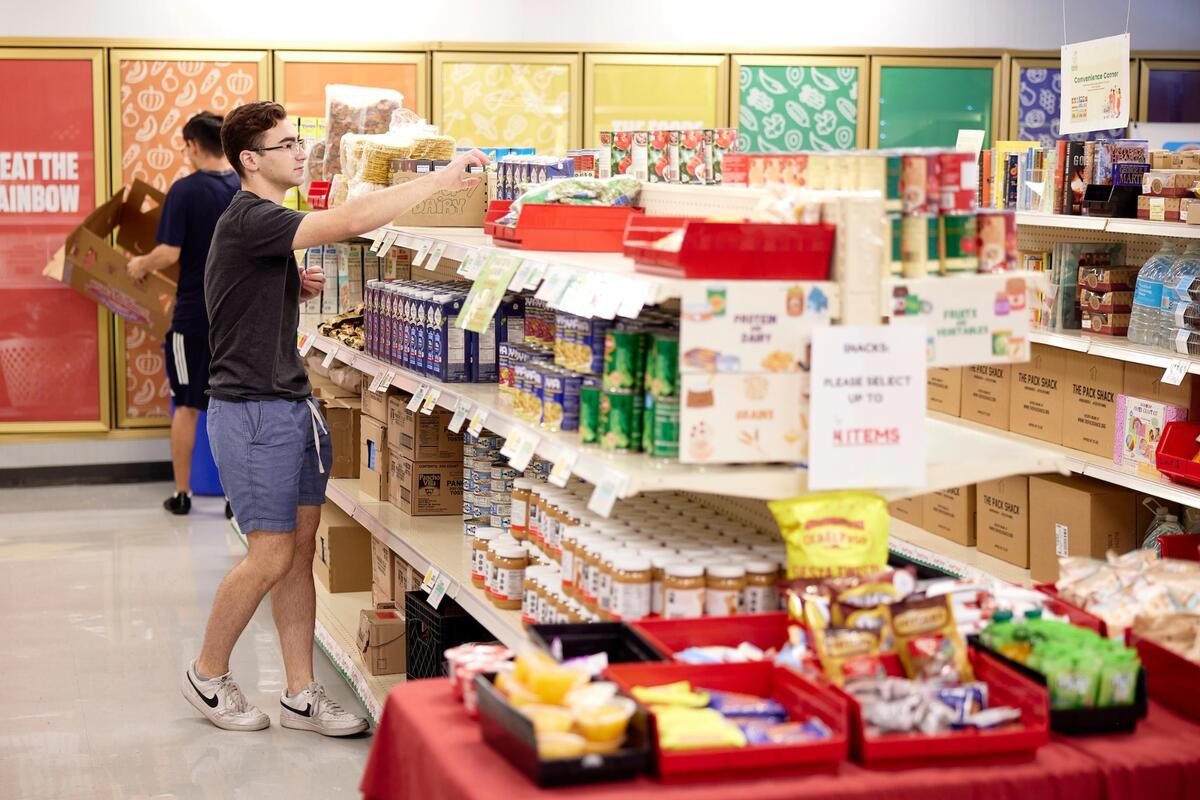Business
How to start a food pantry: A step-by-step guide

Starting a food pantry is a meaningful way to support your community by providing food to those in need.
In this article, you will find the answer to the question “How to start a food pantry?”. By following these guidelines, you can make a significant impact on the lives of individuals and families facing food insecurity.
How to start a food pantry? Understanding the need for a food pantry
Before starting a food pantry, it’s essential to understand the specific needs of your community. Conduct surveys, meet with local organizations, and gather data on food insecurity in your area. This information will help you tailor your food pantry’s services to meet the unique needs of your community.
Identifying gaps in services
Identify any existing food pantries or similar services in your area. Determine what gaps exist in the current system and how your food pantry can fill those gaps. This might include specific types of food, hours of operation, or target demographics that are underserved.
Planning and preparation
Establish clear goals and objectives for your food pantry. Consider what you aim to achieve, such as the number of families served, the types of food provided, and any additional services you might offer. Setting specific, measurable goals will help guide your efforts and track your progress.
Creating a business plan
A detailed business plan is crucial for the success of your food pantry. Your plan should include:
- Mission statement: Clearly define the purpose and mission of your food pantry.
- Target population: Identify who you will serve and how you will reach them.
- Services offered: Outline the types of food and services you will provide.
- Operational plan: Describe how the food pantry will operate, including staffing, hours of operation, and distribution methods.
- Budget: Create a detailed budget, including funding sources, expenses, and financial projections.
Finding a location
Choose a convenient and accessible location for your food pantry. Consider factors such as:
- Space requirements: Ensure the location has enough space for food storage, distribution, and any additional services you plan to offer.
- Accessibility: The location should be easily accessible by public transportation and have adequate parking.
- Safety: Ensure the facility meets safety and health regulations.
Securing funding and resources
Secure funding through various methods, such as:
- Grants: Apply for grants from government agencies, foundations, and other organizations that support food security initiatives.
- Donations: Solicit donations from individuals, businesses, and community groups. Consider hosting fundraising events and online campaigns.
- Partnerships: Partner with local businesses, churches, and other organizations that can provide financial support, food donations, or volunteer assistance.
Food donations
Establish partnerships with local grocery stores, restaurants, farmers, and food banks to secure regular food donations. Create a network of donors who can provide fresh produce, non-perishable items, and other essential food supplies.
Volunteers
Recruit volunteers to help with various tasks, such as food collection, sorting, distribution, and administrative duties. Provide training to ensure they understand the food pantry’s policies and procedures.
Setting up the food pantry
Ensure you have proper food storage facilities to keep donations safe and fresh. This includes:
- Shelving and bins: For organizing non-perishable items.
- Refrigeration and freezers: For storing perishable foods like dairy, meat, and produce.
- Inventory system: Implement an inventory system to track food supplies and manage stock levels.
Distribution methods
Decide on the distribution methods that best meet the needs of your community. Options include:
- On-site distribution: Clients visit the pantry to pick up food.
- Delivery service: Volunteers deliver food directly to clients’ homes.
- Mobile pantry: A truck or van that distributes food at various locations.
Health and safety regulations
Adhere to all local, state, and federal health and safety regulations. This includes proper food handling, storage, and distribution practices. Regularly train staff and volunteers on these guidelines to ensure compliance.
Promoting your food pantry
Raise awareness about your food pantry through community outreach efforts. This can include:
- Flyers and posters: Distribute informational materials in public places, such as community centers, churches, and libraries.
- Social media: Use social media platforms to promote your food pantry, share updates, and engage with the community.
- Local media: Reach out to local newspapers, radio stations, and TV channels to feature stories about your food pantry.
Collaborations
Collaborate with other local organizations, such as schools, churches, and non-profits, to expand your reach and impact. These partnerships can help you connect with more clients and increase your resources.
Managing the food pantry
Maintain accurate records of food donations, distributions, finances, and volunteer hours. This will help you track progress, report to donors, and plan for future needs.
Client services
Provide additional services to support clients, such as nutrition education, cooking classes, and assistance with applying for government benefits. These services can help clients achieve long-term food security and improve their overall well-being.
Continuous improvement
Regularly assess the effectiveness of your food pantry and seek feedback from clients, volunteers, and partners. Use this information to make improvements and adapt to changing needs.
Final thoughts
Starting a food pantry is a rewarding endeavor that can make a significant difference in your community. By understanding the needs of your community, planning carefully, securing funding and resources, and promoting your services, you can create a successful and sustainable food pantry.
Remember to continuously assess and improve your operations to better serve those in need. Through dedication and collaboration, your food pantry can provide vital support and nourishment to individuals and families facing food insecurity.
